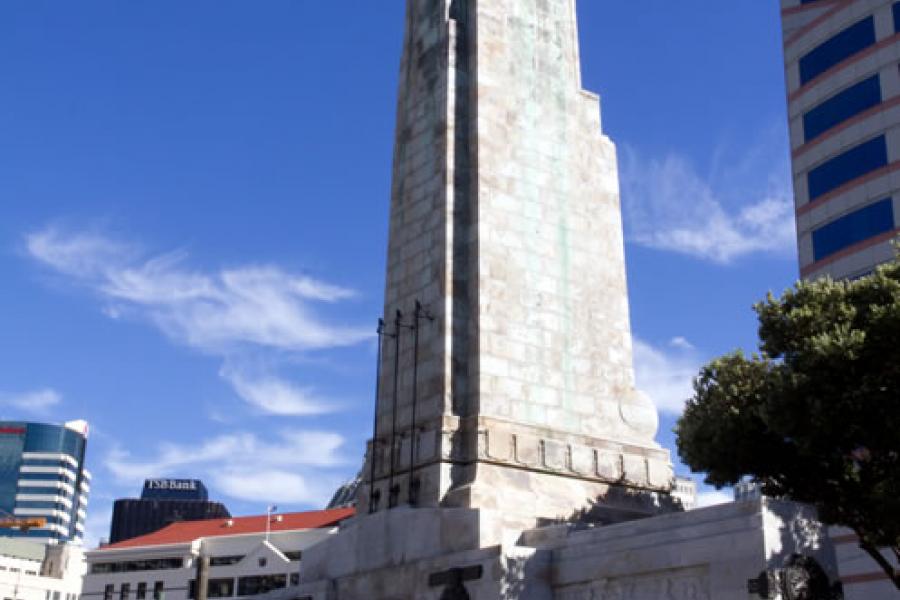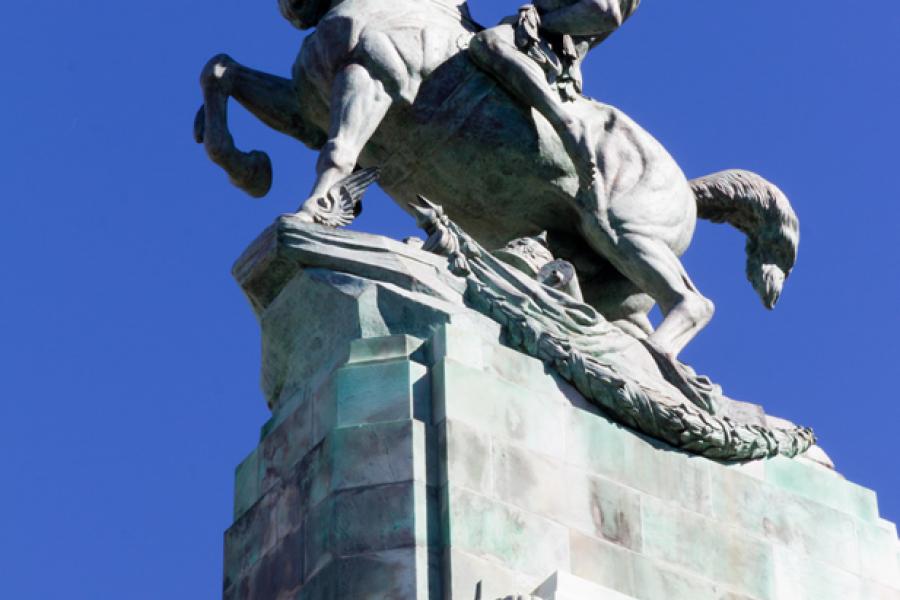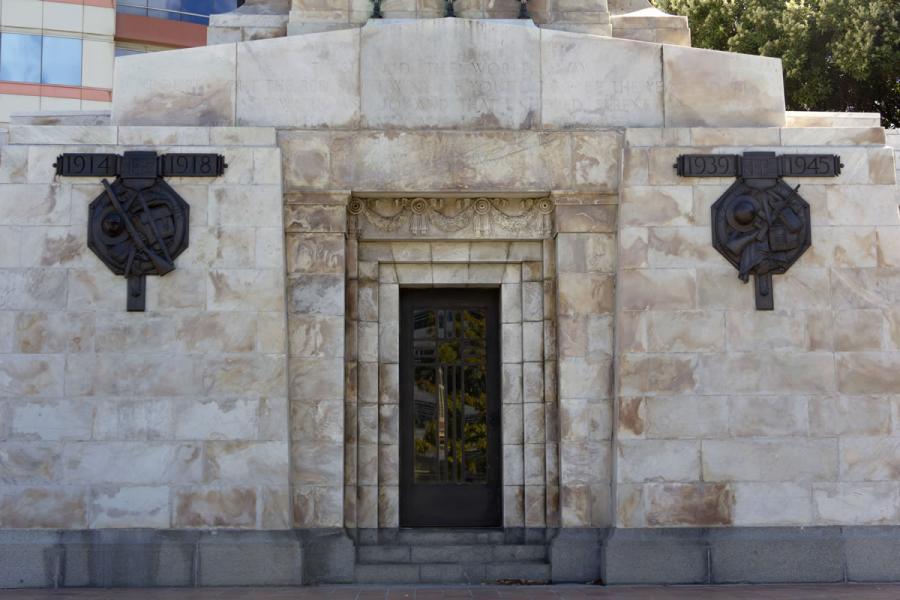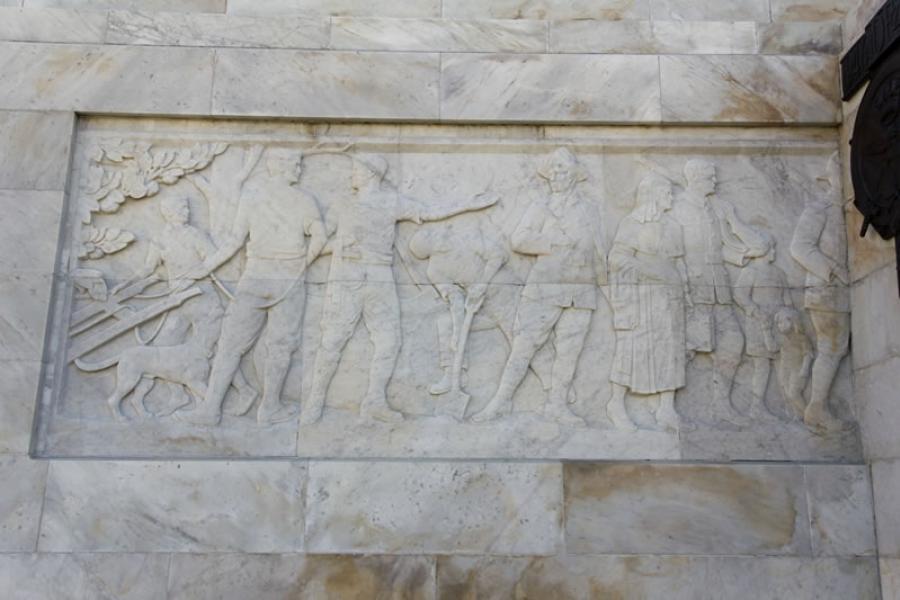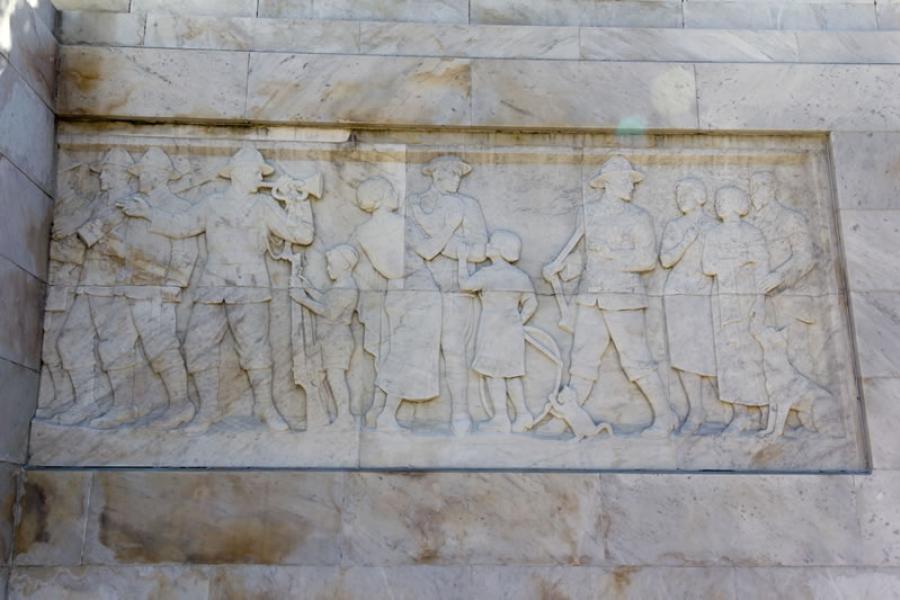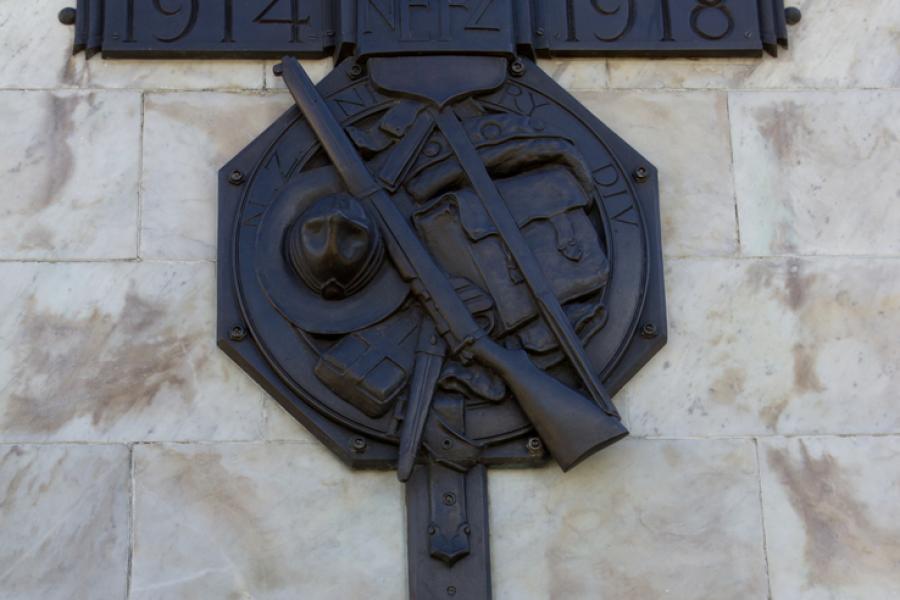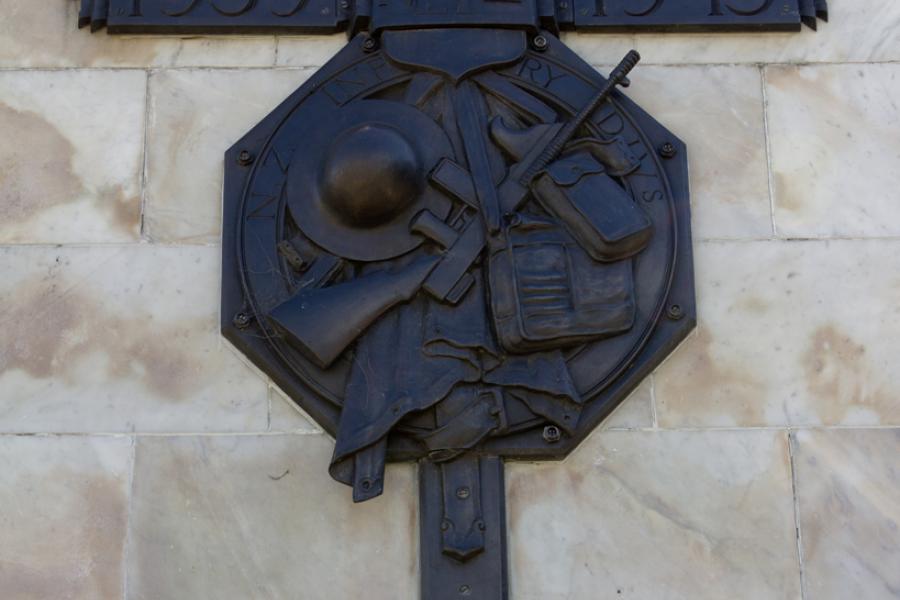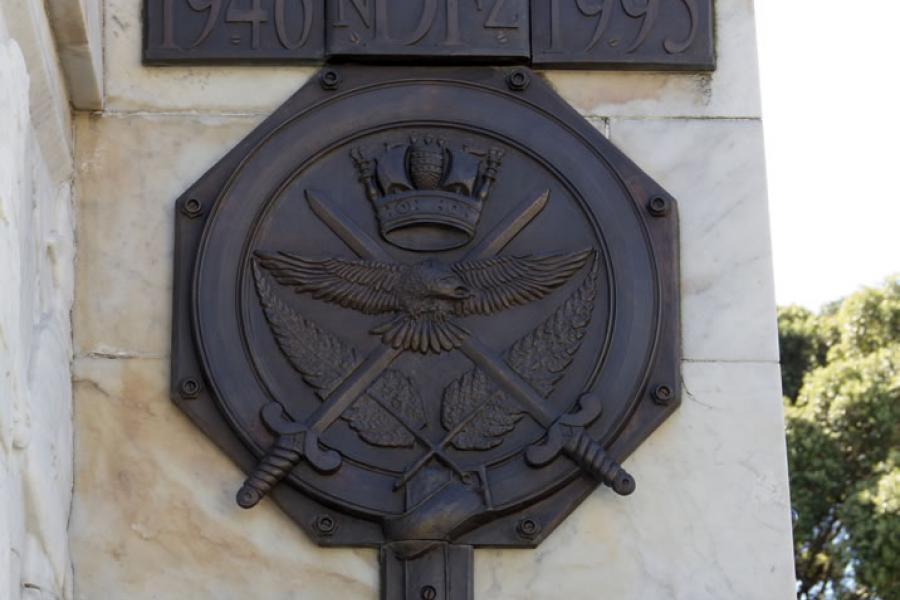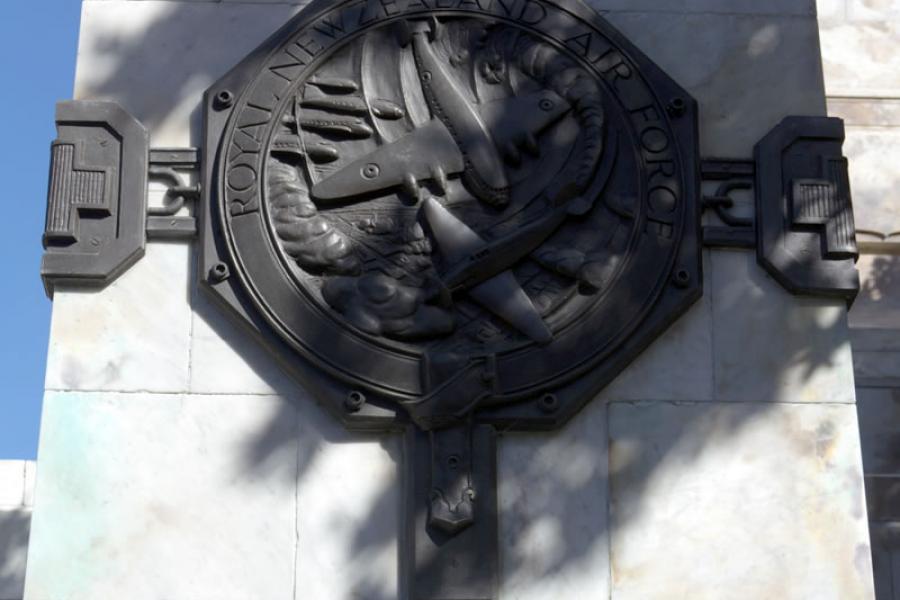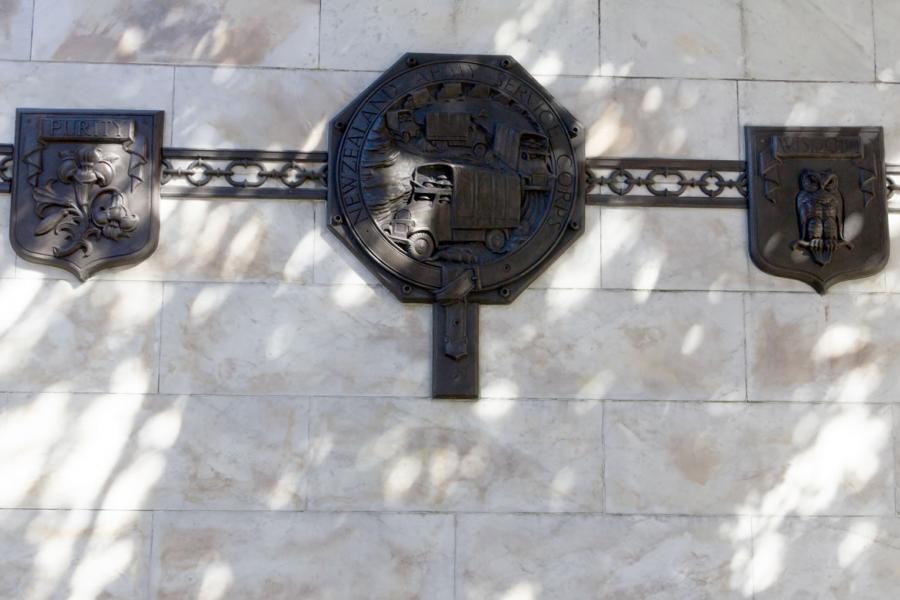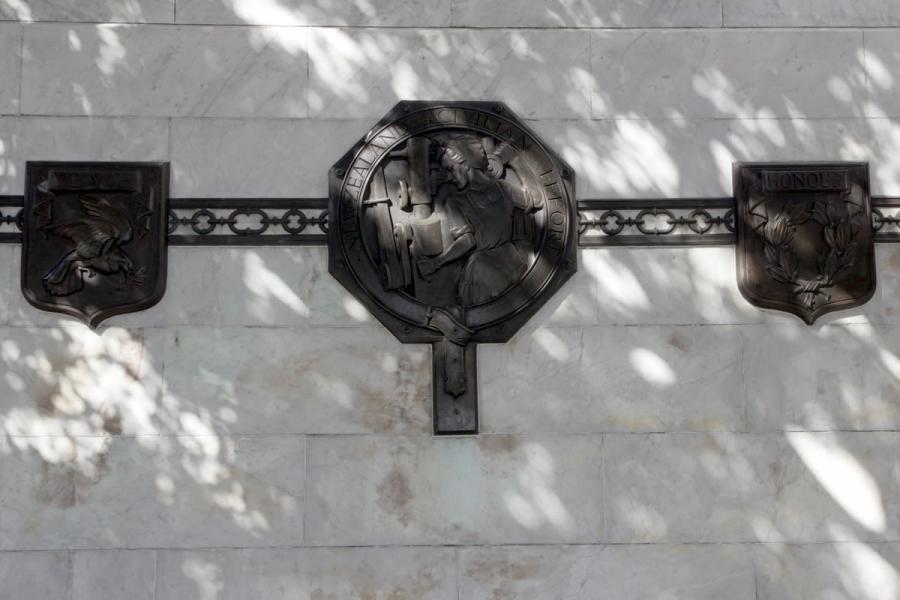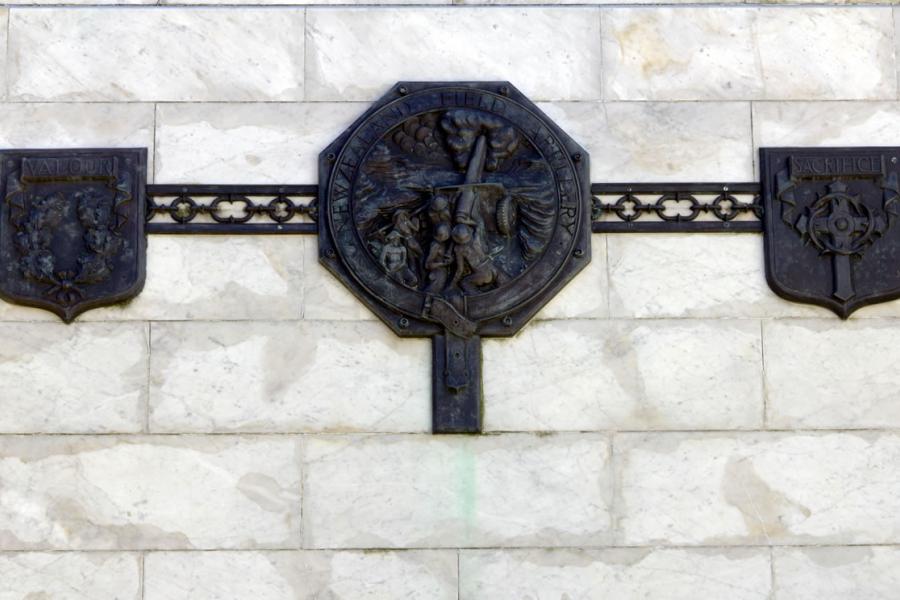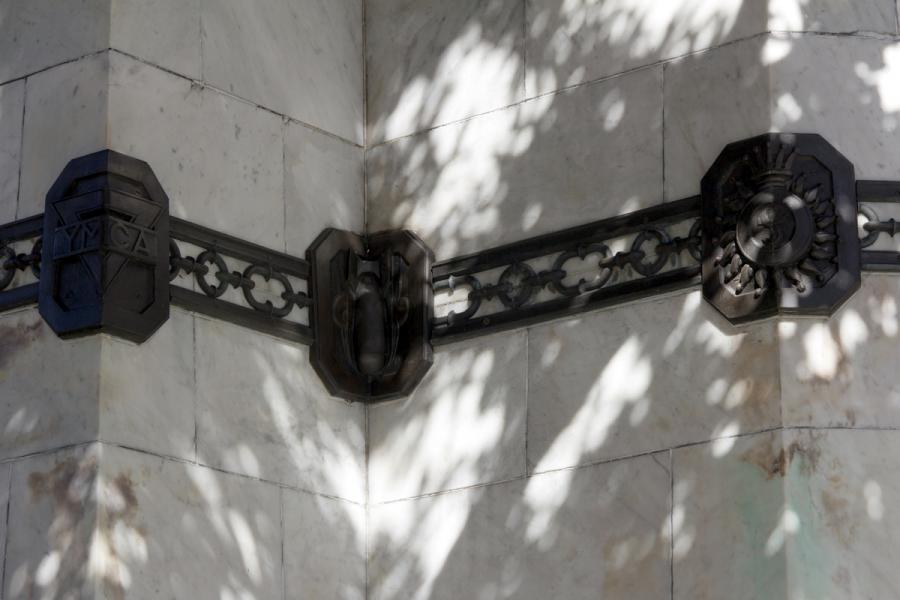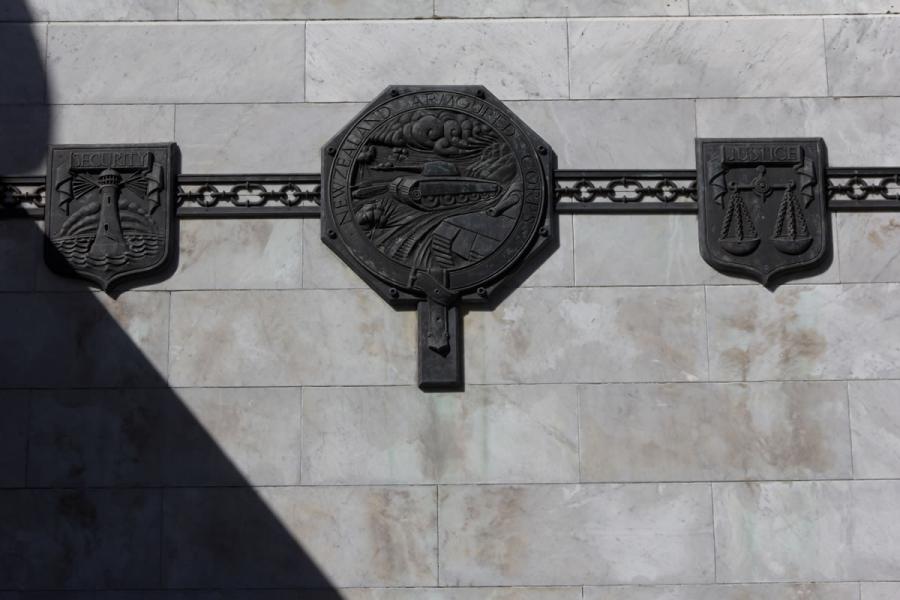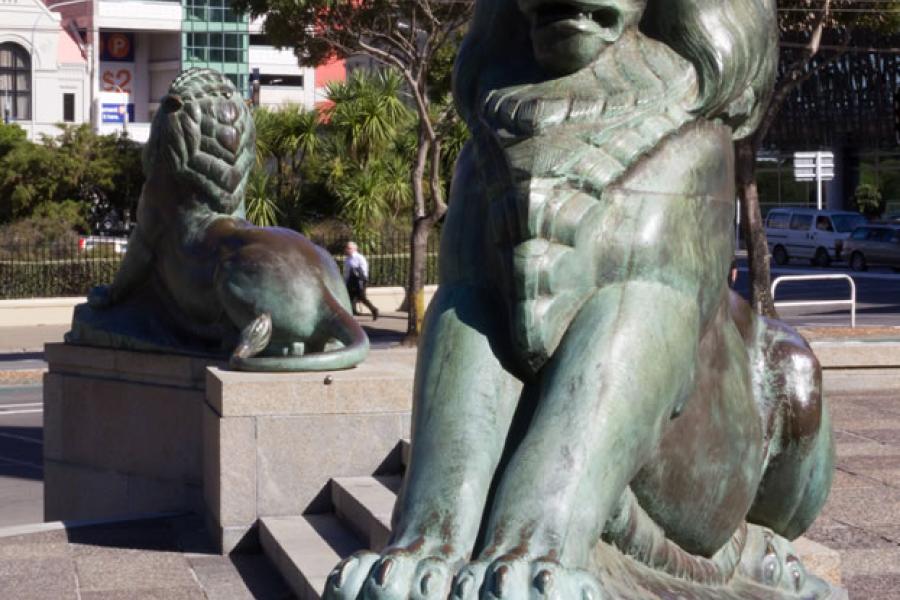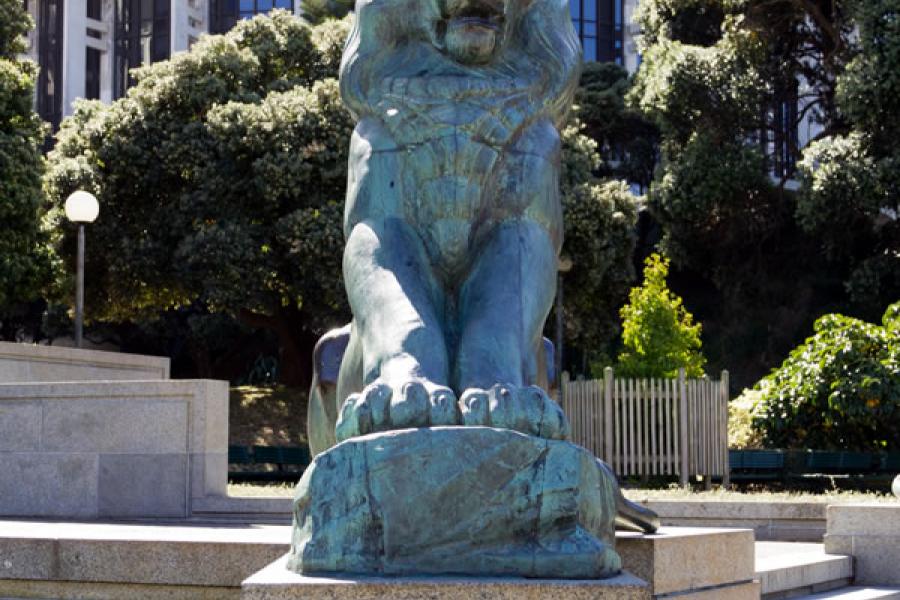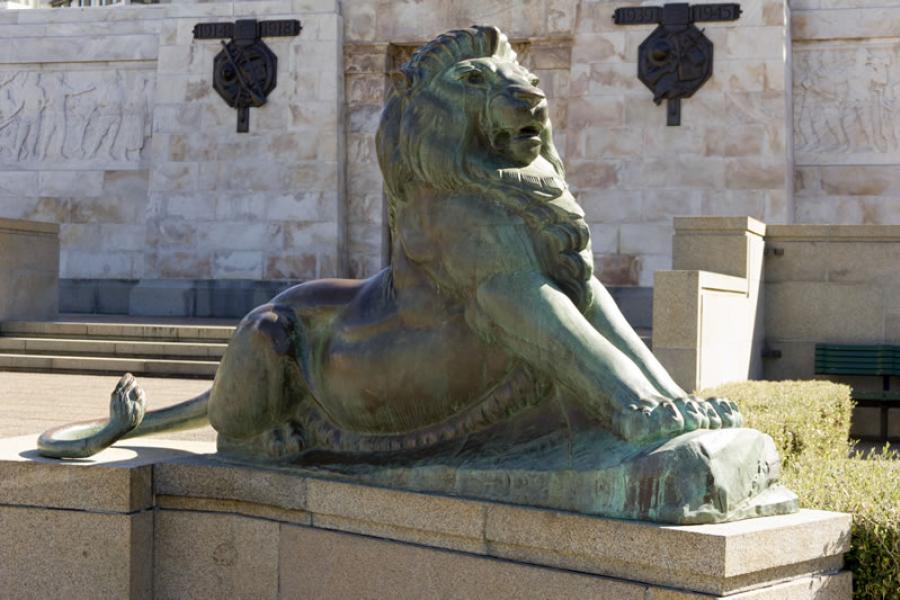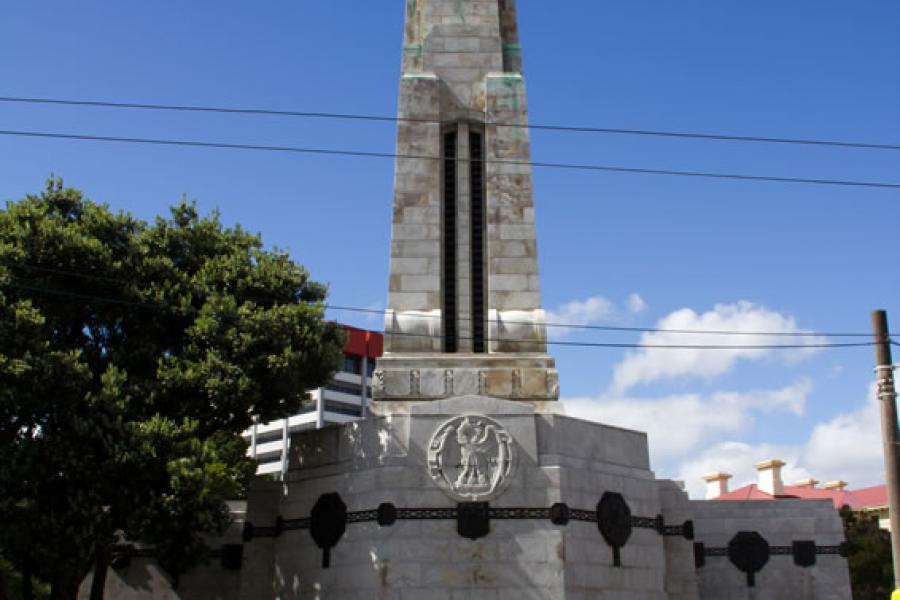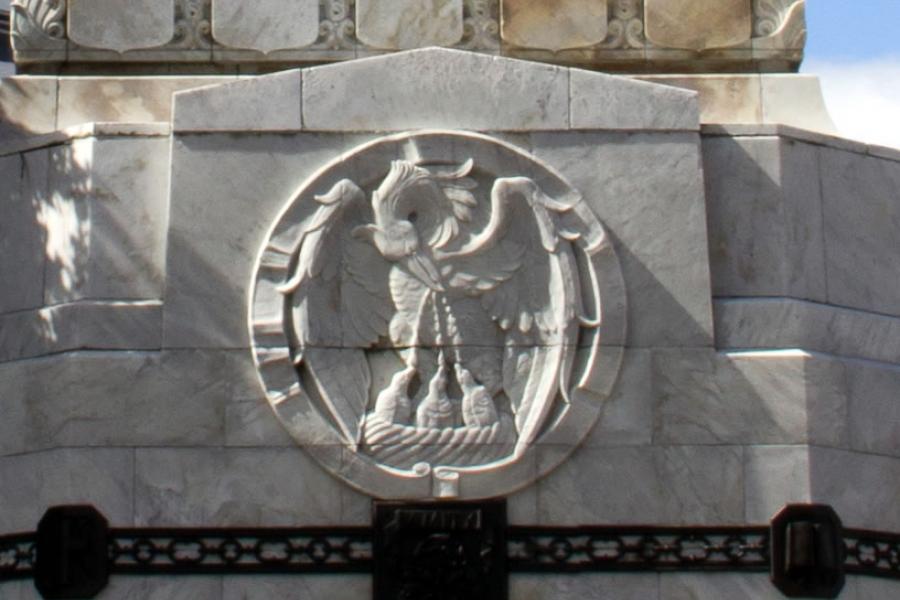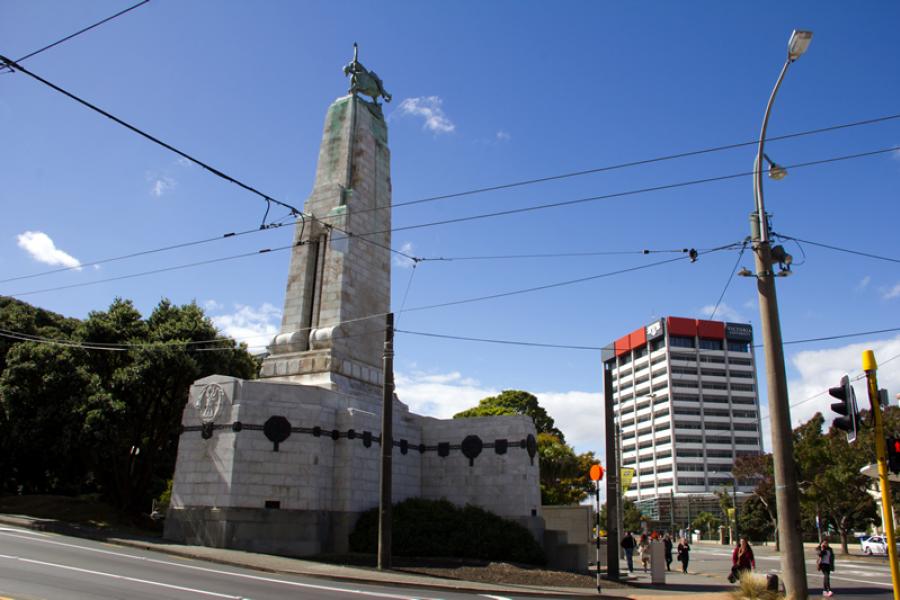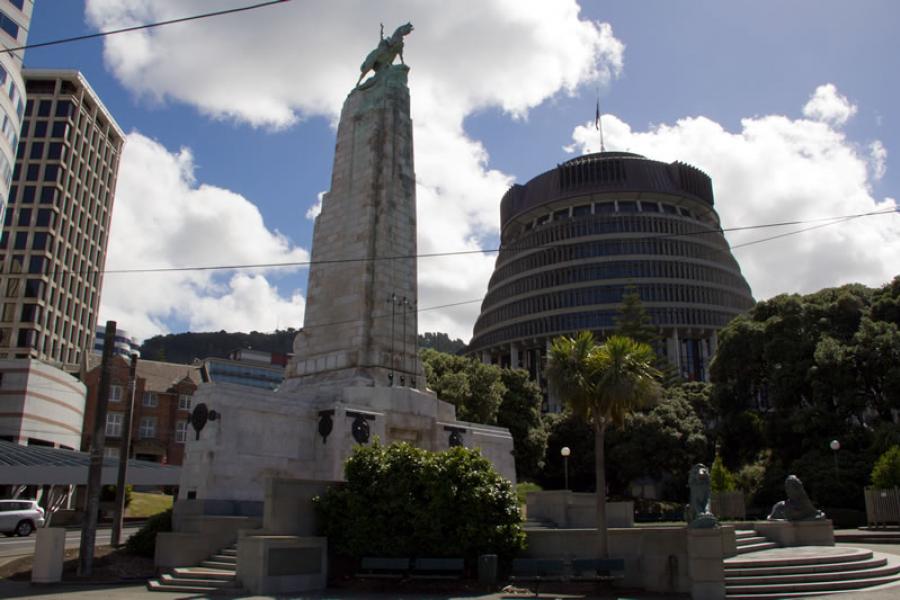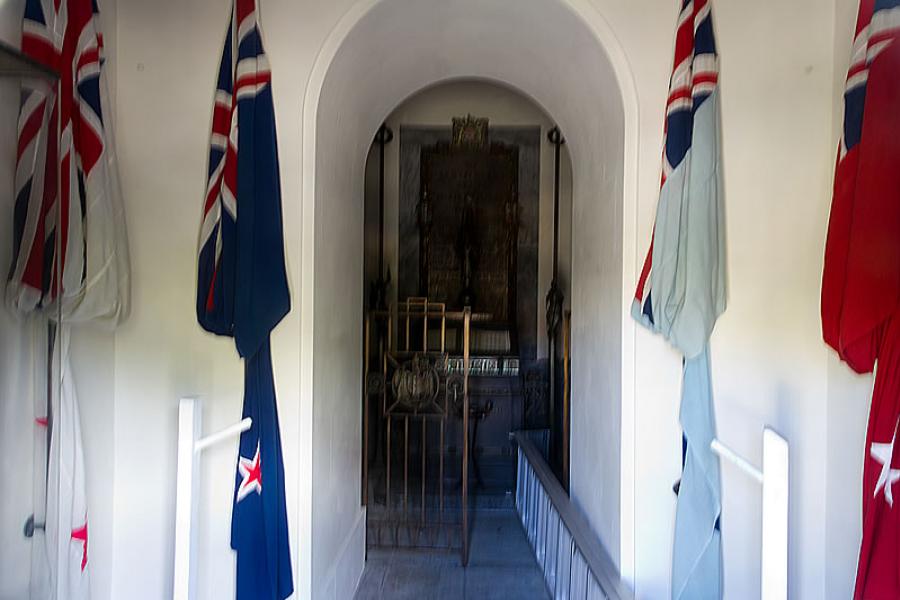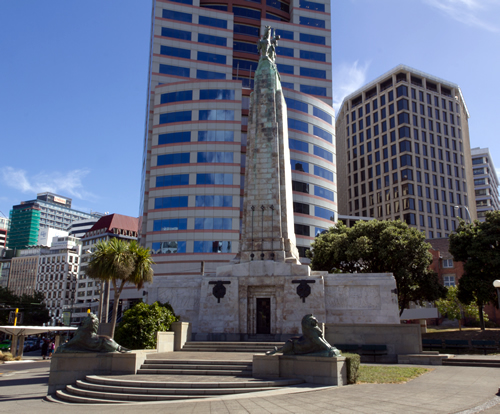
Wellington cenotaph, first used officially on Anzac Day (25 April) 1931 and dedicated on 17 April 1932. The cenotaph was designed by Grierson, Aimer and Draffin, and Richard Gross was responsible for the sculptural work.
The souvenir programme for the dedication says the mounted figure was entitled 'The Will to Peace', which is described as 'Pegasus spurning underfoot the victor's spoils of war and rising into the heavens, enabl[ing] his rider to emerge from the deluge of blood and tears, and to receive the great spiritual assurance of peace.'
In J. Phillips and C. Maclean, The Sorrow and the Pride (2000). other symbols are described,
At the back of the base is a figure of the pelican feeding its life-blood to the young as a symbol of women sacrificing for war, and at the front there is a stone relief of a soldier leaving family, children and pets and being called off sadly to war. The inscription on the monument is Rupert Brooke's mournful lament, 'These laid the world away; poured out the red sweet wine of youth...'
...Its confusion of sentiment and over-elaborate symbolism remains the cenotaph's limitation, and indeed the Second World War additions – insignia of the armed forces, bronze lions and even bronze bombs hurtling earthwards at the corners – have only added to the confusion.
Images: Andy Palmer, 2013
